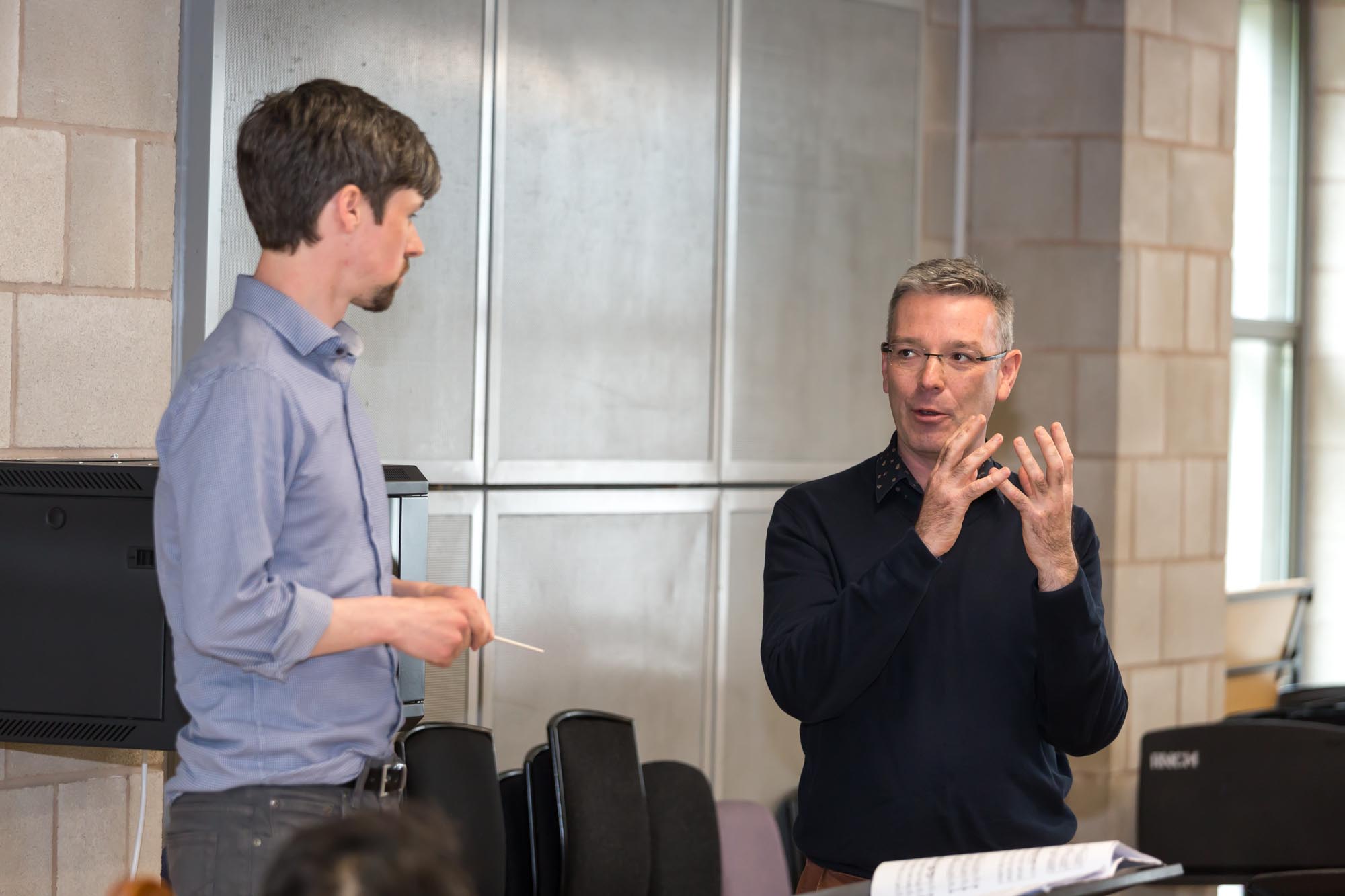Technique 6

Moving beyond “technique” to “conducting”
Although we have continually maintained that there is no right or wrong way to conduct, much of the material contained in the previous chapters is instructional. Without trying to be too dogmatic, the goal has been to assist you in developing a basic technical facility – in much the same way as would be the case in any discipline of musical performance.
With that basic grounding in place, the next stage is to develop your own style, with the ultimate goal being a “virtuoso technique” that is personal to you as an individual. We are all unique human specimens and what works for one can easily appear ridiculous if copied verbatim by another. An 85-year-old man, 160 cm tall and weighing 95 kg will not have the same gestural language as a 28-year-old woman, 180cm tall and weighing 70 kg: no two mature and experienced conductors will look the same. Thank goodness.
The ability to move seamlessly between different technical solutions and create your own unique synthesis of many different styles and approaches is the essence of developing a virtuoso technique. What this means in practice is constantly evolving what you do, picking up new ideas from others (there are no new gestures, just different combinations!), refining, and acquiring the ability to teach yourself.
A large part of this could be described as shifting the focus from beating time to making music but only when appropriate. As a colleague of mine is fond of saying; “conductors should never be traffic policemen but if what the orchestra needs is a traffic policeman, we should be a traffic policeman- but only until such time as they no longer need a traffic policeman!”
Seiji Ozawa describes it thus: “90% of the time we should conduct the music, 10% of the time we should conduct the musicians. The secret is to know when is the 10%.” Certainly, the percentage may vary. In complex unfamiliar music with amateur musicians, they will need us to conduct “them” more often than a world class orchestra performing core repertoire. Yet the distinction between the two is helpful.
The rest of this chapter will explore some of these concepts.